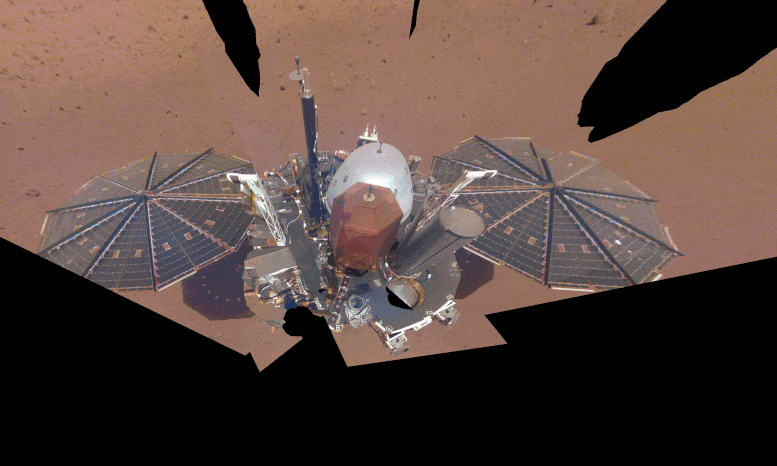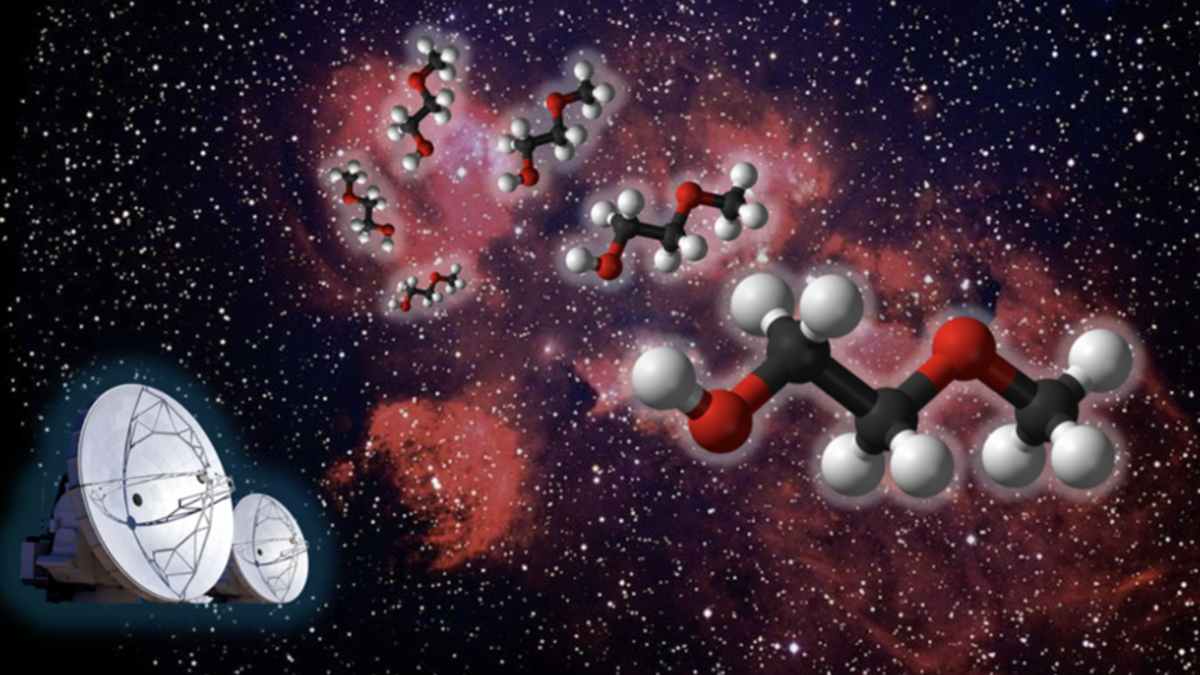이 이미지는 비교를 위해 Insight의 첫 번째 아바타와 마지막 아바타 사이에서 번갈아 나타납니다. NASA의 InSight 탐사선은 로봇 팔에 장착된 카메라를 사용해 화성 착륙 10일 후인 2018년 12월 6일과 2022년 4월 24일에 이 셀카를 촬영했습니다. 탐사선과 태양 전지판에서 두꺼운 먼지 층을 볼 수 있습니다. 마지막 이미지. 크레딧: NASA/JPL-Caltech
InSight 우주선에 대한 전원 공급이 계속 감소함에 따라 임무를 완료하는 데 무엇이 필요한지 자세히 살펴보십시오.
~에 가까운[{” attribute=””>NASA’s Mars InSight lander. The day is fast approaching when the spacecraft will fall silent, ending its history-making mission to reveal secrets of the Red Planet’s interior. Since the spacecraft’s power generation continues to decline as windblown dust on its solar panels thickens, the engineering team has already taken steps to continue as long as possible with what power remains. Despite these efforts, it won’t be long now, as the end is expected to come in the next few weeks.
Although InSight’s tightknit 25-to-30-member operations team – a small group compared to other Mars missions – continues to squeeze the most they can out of InSight, they’ve also begun taking steps to wind down the mission.
Here’s a glimpse of what that looks like.

This is NASA InSight’s first full selfie on Mars. It displays the lander’s solar panels and deck. On top of the deck are its science instruments, weather sensor booms, and UHF antenna. The selfie was taken on December 6, 2018 (Sol 10). Credit: NASA/JPL-Caltech
Preserving Data
With InSight (short for Interior Exploration using Seismic Investigations, Geodesy and Heat Transport), the most important of the final steps of the mission is storing its trove of data and making it accessible to researchers around the world. Already, the data from the lander has yielded details about Mars’ interior layers, its liquid core, the surprisingly variable remnants beneath the surface of its mostly extinct magnetic field, weather on this part of Mars, and lots of quake activity. More insights are sure to follow, as scientists continue to sift through the data.
InSight’s seismometer, provided by France’s Centre National d’Études Spatiales (CNES), has detected more than 1,300 marsquakes since the lander touched down in November 2018. The largest quake it detected measured a magnitude 5. It even recorded quakes from meteoroid impacts. Observing how the seismic waves from those quakes change as they travel through the planet offers an invaluable glimpse into Mars’ interior. Beyond that, these observations also provide a better understanding of how all rocky worlds form, including Earth and its Moon.

NASA’s InSight Mars lander took this final selfie on April 24, 2022, the 1,211th Martian day, or sol, of the mission. The lander is covered with far more dust than it was in its first selfie, taken in December 2018, not long after landing. Credit: NASA/JPL-Caltech
“Finally, we can see Mars as a planet with layers, with different thicknesses, compositions,” said Bruce Banerdt of NASA’s Jet Propulsion Laboratory (JPL) in Southern California, the mission’s principal investigator. “We’re starting to really tease out the details. Now it’s not just this enigma; it’s actually a living, breathing planet.”
The seismometer readings will join the only other set of extraterrestrial seismic data, from the Apollo lunar missions, in NASA’s Planetary Data System. They will also go into an international archive run by the Incorporated Research Institutions for Seismology, which houses “all the terrestrial seismic network data locations,” said JPL’s Sue Smrekar, InSight’s deputy principal investigator. “Now, we also have one on Mars.”
Smrekar said the data is expected to continue yielding discoveries for decades.

The rocket that launched NASA’s InSight lander to Mars in 2018 is seen at Vandenberg Air Force Base, now called Vandenberg Space Force Base. Credit: NASA/JPL-Caltech/Charles Babir
Managing Power
Earlier this summer, the lander had so little power remaining that the mission turned off all of InSight’s other science instruments in order to keep the seismometer running. They even turned off the fault protection system that would otherwise automatically shut down the seismometer if the system detects that the lander’s power generation is dangerously low.
“We were down to less than 20% of the original generating capacity,” said Banerdt. “That means we can’t afford to run the instruments around the clock.”
Recently, after a regional dust storm added to the lander’s dust-covered solar panels, the team decided to turn off the seismometer altogether in order to save power. Now that the storm is over, the seismometer is collecting data again. However, the mission expects the lander only has enough power for a few more weeks.
Of the seismometer’s array of sensors, only the most sensitive were still operating, said Liz Barrett, who leads science and instrument operations for the team at JPL, adding, “We’re pushing it to the very end.”
트윈 팩
팀의 조용한 구성원은 JPL에서 InSight의 전체 크기 엔지니어링 모델인 ForeSight입니다. 현장 도구 연구실. 엔지니어들은 ForeSight를 사용하여 InSight가 탐사선의 로봇 팔을 사용하여 화성 표면에 과학 기기를 배치할 수 있는 방법을 연습했습니다. 테스트 기술 프로브 온도 프로브를 넣으려면 끈적끈적한 화성 토양개발 방법 소음 감소 지진계로 포착했습니다.
Forsight는 보관 상자에 보관됩니다. Banerdt는 “우리는 그것을 사랑의 보살핌으로 채울 것입니다.”라고 말했습니다. “그녀는 이 전체 임무에서 우리에게 훌륭한 도구이자 훌륭한 동반자였습니다.”

제트 추진 연구소의 테스트 공간에서 엔지니어들은 임무가 완료되면 동원될 착륙선의 실물 크기 복제품인 ForeSight를 사용하여 InSight 장비를 배치하기 위한 훈련을 받고 있습니다. 많은 엔지니어들은 화성에 나타나는 햇빛을 모방한 밝은 노란색 빛을 차단하기 위해 선글라스를 착용합니다. 크레딧: NASA/JPL-Caltech/IPGP
미션 종료 공지
InSight가 화성 궤도를 도는 우주선과의 두 번의 연속적인 접촉 세션을 놓쳤을 때, 화성 중계망NASA는 임무의 종료를 발표할 것입니다. 그러나 이 규칙은 연결 손실의 원인이 프로브 자체인 경우에만 적용된다고 JPL의 네트워크 관리자 Roy Gladden은 말했습니다. 그 다음에, NASA의 딥 스페이스 네트워크 만일의 경우를 대비하여 그는 잠시 동안 계속 듣고 있을 것입니다.
그러나 InSight와 다시 연결하기 위한 영웅적인 행동은 없습니다. 강풍이 패널을 청소하는 것과 같은 임무를 구하는 이벤트가 불가능한 것은 아니지만 완전히 불가능한 것으로 간주됩니다.
그 동안 InSight가 연락을 유지하는 한 팀은 계속해서 데이터를 수집할 것입니다. Banerdt는 “가능한 한 오랫동안 과학적 측정을 계속할 것”이라고 말했습니다. “우리는 화성의 지배를 받고 있습니다. 화성의 날씨는 비와 눈이 아니라 화성의 날씨는 먼지와 바람입니다.”
미션에 대해 더 알아보기
NASA의 제트 추진 연구소(JPL)는 NASA 과학 임무 위원회의 InSight 프로그램을 관리합니다. InSight는 앨라배마주 헌츠빌에 있는 기관의 Marshall Space Flight Center에서 관리하는 NASA의 디스커버리 프로그램의 일부입니다. 덴버의 록히드 마틴 스페이스(Lockheed Martin Space of Denver)는 크루즈 스테이지와 착륙선을 포함한 InSight 우주선을 제작했으며 임무의 우주선 작업을 지원합니다.
프랑스 국립우주연구센터(CNES)와 독일항공우주센터(DLR)를 비롯한 많은 유럽 파트너들이 InSight 임무를 지원하고 있습니다. 국립우주연구센터는 IPGP(Institut de Physiques d’Institut d’Institut d’Institut d’Institut d’Institut d’Institut d’Institut du Physique in 파리의 세계). 공통 환경 정보 시스템에 대한 상당한 기여는 IPGP에서 나왔습니다. 독일의 막스 플랑크 태양계 연구 연구소(MPS); 스위스의 스위스 연방 공과 대학(ETH Zurich);[{” attribute=””>Imperial College London and Oxford University in the United Kingdom; and JPL. DLR provided the Heat Flow and Physical Properties Package (HP3) instrument, with significant contributions from the Space Research Center (CBK) of the Polish Academy of Sciences and Astronika in Poland. Spain’s Centro de Astrobiología (CAB) supplied the temperature and wind sensors, and the Italian Space Agency (ASI) supplied a passive laser retroreflector.

“음악 팬. 매우 겸손한 탐험가. 분석가. 여행 괴짜. 익스트림 TV 전문가. 게이머.”




